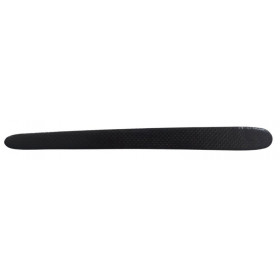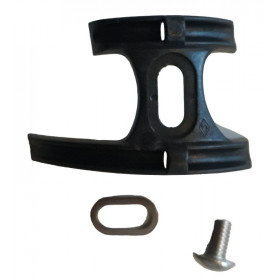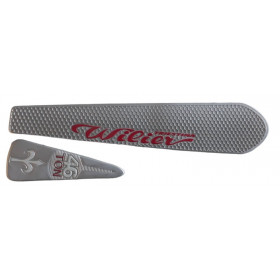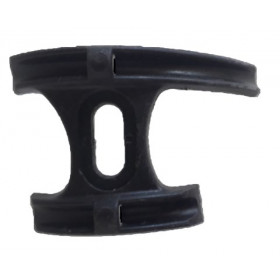-
 New productFrame protection carbon
New productFrame protection carbon- €1.55
-
 New product -75%Campagnolo cables guide
New product -75%Campagnolo cables guide- €1.12
- €4.49
-
 New productWilier frame protectors
New productWilier frame protectors- €4.99
-
 New productCables guide for fixture by 1 screw under the bottom bracket
New productCables guide for fixture by 1 screw under the bottom bracket- €2.99
Showing 1-4 of 4 item(s)
Road bike cable guide: a small but essential part for smooth cable routing
Among the many bike parts that make up a road bike, some may seem insignificant—until their absence or wear becomes noticeable. The road bike cable guide, mounted under the bottom bracket shell, is one of those discreet yet essential components. In this article, discover its role, key features, and why it's important to pay attention to it, especially when assembling a road bike frame kit or replacing a road bike derailleur cable.
What is the purpose of a road bike cable guide ?
The cable guide is a small piece, usually made of plastic or composite, installed underneath the bottom bracket. Its role is to channel the cables for the front and rear derailleurs, ensuring smooth and friction-free movement between the down tube and the rear stays of the frame.
It prevents the cables from rubbing directly against the frame, which could lead to premature wear on the frame tubing, cable tension loss, or imprecise shifting.
Features of a good cable guide
An efficient road bike cable guide typically has the following characteristics:
-
Frame Compatibility: It must match the diameter and design of your bike's bottom bracket shell. Some models are specific to certain brands or frame types.
-
Number of Channels: Usually two, to route the front and rear derailleur cables. Some guides offer a third channel for a rear brake cable, if routed under the bottom bracket.
-
Fixing System: It can be screwed (often included with a road bike frame kit) or clipped, depending on the frame.
-
Smooth or Roller Design: Some versions feature tiny pulleys or rounded channels to further minimize derailleur cable friction.
-
Lightweight: Generally under 10 grams, so it doesn’t add noticeable weight to your crankset area or overall bike build.
When should you replace a cable guide?
Over time, this small part can wear out—especially if you ride often in wet or dusty conditions. Here are signs it might be time for a replacement:
-
Shifting becomes inconsistent.
-
Visible wear on the cables where they contact the guide.
-
The guide is loose, cracked, or missing.
When installing a road bike frame kit, it’s a good idea to inspect and replace the cable guide with a new, compatible one. This ensures clean cable routing and improves the longevity of your road bike derailleur cables.
Pro tip: optimize cable routing
For optimal installation:
-
Clean the surface under the bottom bracket.
-
Secure the guide (screw it in or clip it on).
-
Use new, well-lubricated cables.
-
Avoid sharp bends—ensure smooth, natural cable curves.
Proper cable routing enhances both your drivetrain performance and the overall aesthetic of your bike.
Conclusion
The road bike cable guide may be a small part, but it plays a big role in your bike’s shifting system. Whether you're building a road bike frame kit from scratch or replacing worn-out derailleur cables, don’t overlook this key piece under your bottom bracket shell. It’s a small detail that makes a big difference out on the road.
